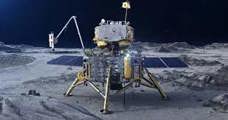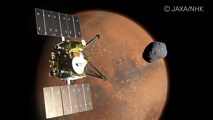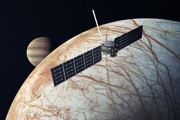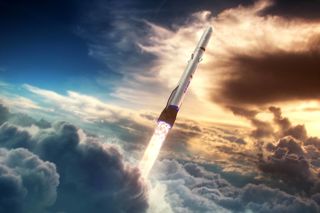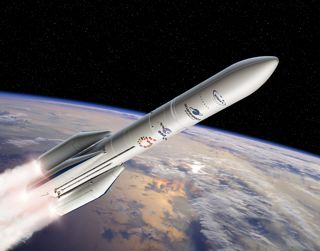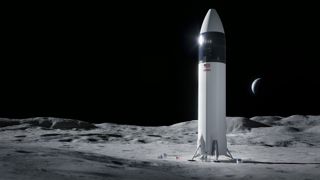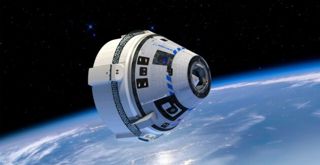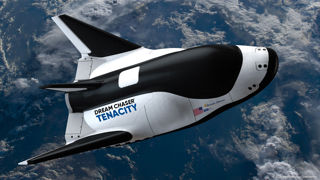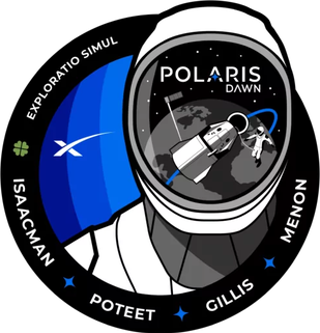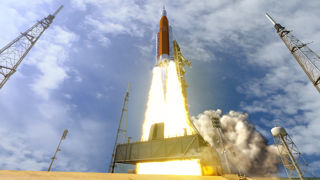
What’s Happening in Space in 2024
- 28th Dec 2023
- Author: Alex Thompson
Each year, space science and exploration continues to reach new heights and 2024 is set to be no different! Multiple spacecraft launches, missions and crewed spaceflights are sure to hit the headlines this year.
Artemis II
For the first time since 1972, humans are going back to the Moon.
Following the success of the initial uncrewed Artemis mission in 2022, NASA are preparing for their next giant leap in 2024 with Artemis II. Though there will be no touchdown on the surface, a crew of four will enter lunar orbit, the first to fly further than low-Earth orbit since the end of the Apollo missions.
This crew will consist of commander Reid Wiseman, pilot Victor Glover and payload specialists Christina Koch and Jeremy Hansen. This will lead to Koch being the first woman, Glover the first person of colour and Hansen the first non-American to visit the Moon.
Artemis II will also be the first time the SLS rocket and Orion spacecraft will be used for a crewed mission. If successful, this mission will set up the third Artemis mission, a proposed lunar landing in 2025.
More Moon!
The United Launch Alliance's (ULA) Vulcan Centaur is scheduled for its first launch in January to take the Peregrine Lunar Lander to the Moon. Built by Astrobotic Technology as part of NASA's Commercial Lunar Payload Services (CLPS) program, it will be vying to become the first successful commercial mission to land on the Moon. It's main competitor Intuitive Machines' IM-1 mission is also part of NASA's CLPS program and scheduled for launch no earlier than February.
NASA aren’t the only ones getting involved with the Moon this year. The Chinese National Space Administration (CNSA) are continuing phase three of their Chinese Lunar Exploration Program with the launch of Chang’e 6 in May. After its predecessor obtained and returned rock and soil samples from the Moon’s near side, Chang’e 6 will attempt to obtain the first ever samples from the far side of our natural satellite and bring them back to Earth. Following this mission CNSA will move on to phase four of the program, constructing a research station near the lunar south pole, before crewed missions to the Moon in the 2030’s.
And it’s not just our Moon getting attention. JAXA (the Japanese Aerospace eXploration Agency) will attempt to conduct research on Mars’ two moons with the September launch of Mars Moons eXploration (MMX). The spacecraft is set for flybys of Deimos whilst also landing and collecting samples from Phobos. The mission aims to determine if the Martian moons were created by a larger body hitting Mars or if they were originally captured asteroids.
And Europa Clipper will try to go even further by heading for Jupiter to study its icy moon, Europa. The NASA mission was originally set to orbit the moon, but radiation from Jupiter’s magnetosphere meant experts decided for the spacecraft to instead orbit elliptically around the planet and conduct forty-four scheduled flybys of Europa. Europa Clipper should reach its destination in 2030.
Lift Off
2024 will hopefully see the maiden flights of several new launch vehicles.
Blue Origin’s New Glenn hope for its first launch this year. The near 100 metre rocket has been delayed several times since its original launch date of 2020, but the plan is that August will see it finally take off and send NASA’s EscaPADE spacecraft to Mars to study the planet’s magnetosphere.
The newest member of the Ariane family should also take to the skies. Ariane 6 is the newest launch vehicle from a lineage that started in the 1970’s, and replaces the Ariane 5 model that has been operational since the mid-1990’s. The ESA vehicle has several planned launches in 2024, the first due to take place in April.
And Britain looks to get in on the rocket game this year with the launch of Skyrora. The group’s XL rocket should launch its first payloads from Unst in Shetland this year, which would make it only the second ever time a UK rocket has launched a UK satellite, and the first to take place from these shores (Prospero in 1971 was launched from Woomera, Australia.)
Space Ready
It’s not just those rockets getting ready for space – we should see several new spacecrafts leave the Earth too.
After a mixed 2023 for SpaceX’s Starship rocket, its Human Landing System (Starship HLS) will have its first uncrewed test flight to demonstrate a safe landing on the Moon. It has been created to transfer astronauts from the lunar orbit to its surface and back again (comparative to the Apollo lunar lander). The first crewed flight should take place on Artemis 3, before an upgraded version is operated for Artemis 4.
The first crewed flight should be a lot earlier for Boeing Starliner. A test flight with astronauts should take place around April, the final step before Starliner becomes operational and it begins to ferry people to the International Space Station (ISS) and back.
Also heading to the ISS in April should be Sierra Space’s Dream Chaser. The reusable spaceplane will initially deliver cargo to the ISS before a future crewed version of the vehicle is developed. It is intended to launch vertically on a Vulcan Centaur rocket, and a proposed model to be used by ESA may also see it launch on an Ariane 6 in the coming years.
Crew is Going to Space?
Including the Artemis II mission, there are currently seven crewed flights planned to launch from the United States alone in 2024 – the most of any year in the twenty-first century. In addition to the changing of the official ISS crew throughout the year, more commercial companies are eyeing flights to low-Earth orbit.
Prominently amongst these groups are Axiom, who will launch their third short-stay ISS trip on 17 January. Amongst the four travellers onboard will be Alper Gezeravci, who will become Turkey’s first astronaut, and Marcus Wandt, who will become the first member ESA’s 2022 Astronaut Group to receive a spaceflight – this will also be the “first commercial spaceflight mission for an ESA-sponsored astronaut.” The crew will spend a fortnight on the ISS, with a fourth Axiom mission to the station planned for October.
2024 could also finally see the long-anticipated Polaris Dawn mission, a private human spaceflight operated by SpaceX on behalf of billionaire Jared Isaacman. The Shift4Payments CEO has already been to space as commander of the 2021 Inspiration4 mission, and will attempt several records aboard SpaceX’s Crew Dragon spacecraft with an additional crew of three. These include performing the first spacewalk (EVA) by a commercial group and setting a new record height for a crewed mission in Earth orbit of 1400km. This will be the first of three planned Polaris missions, all involving Isaacman as part of the crew.
For full transparency, I did predict some of these things for 2023 (and indeed some for 2022.) Let’s hope I don’t have to predict any of them again for 2025!
Full references / credits:
(Banner image) The SLS will take flight again in 2024. Credit: NASA
(1a) Artemis II will send a crew back to the Moon. Credit: NASA
(1b) Clockwise from far left: Christina Koch, Victor Glover, Jeremy Hansen and Reid Wiseman. Credit: NASA
(2a) An animation of Chang’e 6 on the Moon. Credit: CNSA
(2b) MMX will study Mars’ moons Phobos and Deimos. Credit: JAXA
(2c) Europa Clipper will orbit Jupiter to study its moon, Europa. Credit: NASA
(3a) The 100 metre New Glenn rocket. Credit: Blue Origin
(3b) Ariane 6 should take off this year. Credit: ESA
(3c) Skyrora XL will make history. Credit: Skyrora
(4a) Will Starship HLS be ready for Artemis 3? Credit: SpaceX
(4b) Starliner – due to arrive at the ISS this April. Credit: Boeing
(4c) The very unique looking Dream Chaser. Credit: Sierra Nevada Corporation
(5) The Polaris missions should kick off in 2024. Credit: Polaris Program



